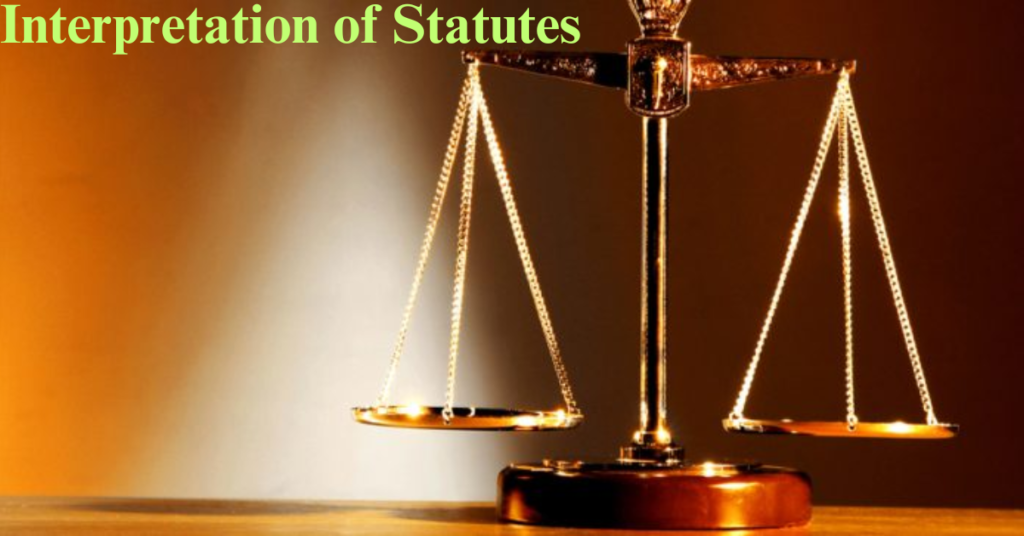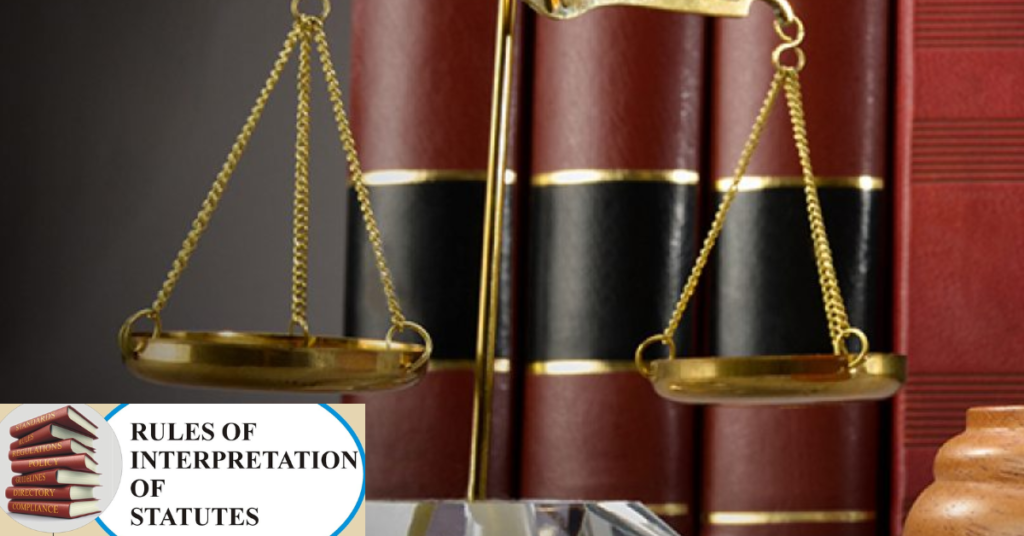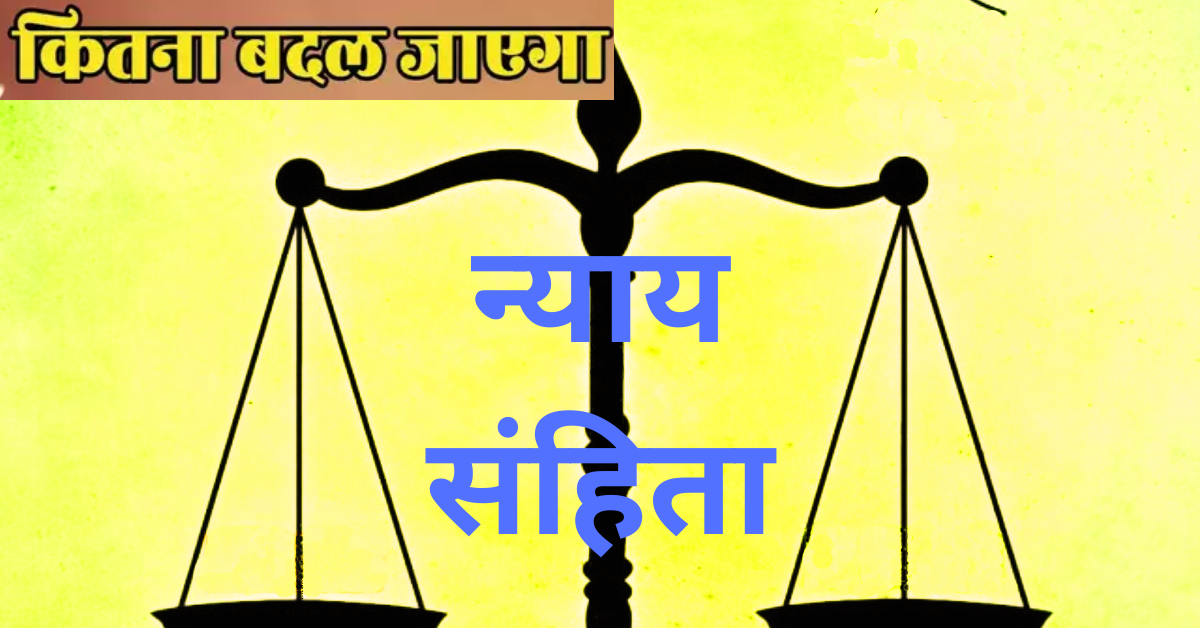
Table of Contents
Interpretation of statutes is a crucial aspect of the judicial system. The primary purpose of laws is to establish order and discipline in society, but legal language can sometimes be complex, ambiguous, or controversial. In such cases, courts must interpret the statutes to resolve disputes accurately and fairly. The primary goal of interpreting statutes is to ensure that legal provisions are correctly and justly understood, thereby enabling the effective and smooth application of the law in society.
4 – Principles of Statutory Interpretation of Statutes
Various principles guide the interpretation of statutes, helping courts understand the meaning and purpose of laws. These principles simplify and ensure the fairness of the legal process. The major principles used in statutory interpretation include:

- Literal Rule
According to the literal rule, the words of a statute are to be understood in their ordinary and popular sense. Under this principle, courts accept the clear and plain meaning of the law and do not seek to uncover its underlying purpose. The aim is to extract a straightforward and clear meaning from the words of the statute, avoiding any ambiguity or confusion in the legal process.
- Golden Rule
When the literal rule results in ambiguity or an unsatisfactory outcome, the golden rule is applied. This principle allows for a reasonable interpretation that fulfills the statute’s purpose and achieves just results. The golden rule aims to derive a meaning from legal provisions that avoids any ambiguity or controversy.
- Mischief Rule
Under this principle, courts strive to determine the purpose behind the law and the problem it aims to address. The main objective is to fulfill the law’s intentions and resolve the issues it seeks to remedy. The mischief rule prioritizes justice and rationality in the interpretation of statutes.
- Harmonious Construction
When two or more statutes appear to be contradictory, the principle of harmonious construction is followed. This principle seeks to interpret statutes in a manner that allows them to coexist harmoniously. The objective is to establish coherence among legal provisions and eliminate any contradictions.
Methods of Interpretation
Courts use various methods to interpret statutes, helping them derive the correct and just meaning of legal provisions. The primary methods include:
- Internal Aids
Internal aids involve using the provisions, definitions, schedules, etc., within the statute itself to clarify its meaning. This method entails analyzing the statute’s various sections, definitions, and schedules to derive a precise and accurate understanding of the legal provisions.
- External Aids
External aids involve using materials outside the statute, such as the legislative history, parliamentary debates, other legal provisions, and judicial decisions, to interpret the statute. This method involves studying the legal history, literature, and judicial decisions to derive a correct and just understanding of the legal provisions. External aids provide a broader perspective in interpreting legal provisions.
- Precedent
Following previous judicial decisions ensures consistency and continuity in the interpretation of the law. Precedents provide stability and predictability in the judicial system, ensuring that legal provisions are applied uniformly. Courts follow precedents to interpret legal provisions and maintain consistency in the judicial process.
- International Statutes
Sometimes, international laws and standards are referenced, especially when national statutes are ambiguous or insufficient. International statutes and standards provide a broader perspective and context for interpreting legal provisions. Courts follow international laws and standards to interpret legal provisions and adhere to international norms in the judicial process.
Interpretation of Statutes of Indian Perspective
Interpretation of statutes holds significant importance in India. The Indian judiciary has employed various principles and methods in different cases to interpret statutes. The Supreme Court and High Courts have frequently emphasized that the interpretation of laws should serve justice and societal interests. The Indian judiciary prioritizes justice, rationality, and legal objectives while interpreting statutes.
Notable Decisions
The Indian judiciary has delivered several landmark decisions in statutory interpretation. Some prominent decisions include:
- Kesavananda Bharati v. State of Kerala (1973)
In this case, the Supreme Court established the Basic Structure doctrine of the Constitution and provided important guidelines for the interpretation of statutes. This decision ensured stability and continuity in the Indian judiciary and offered significant guidelines for interpreting legal provisions.
- Maneka Gandhi v. Union of India (1978)
In this case, the Supreme Court clarified that the interpretation of statutes must protect the fundamental rights of citizens. This decision ensured the protection of fundamental rights and just interpretation of legal provisions in the Indian judiciary.
- Vishakha v. State of Rajasthan (1997)
In this case, the court applied the mischief rule to provide a broad interpretation aimed at fulfilling the statute’s purpose. This decision ensured a broad and just interpretation of legal provisions in the Indian judiciary and prioritized rationality in the judicial process.
- All India Railway Recruitment Board v. Shyam Kumar (2010)
In this case, the Supreme Court emphasized that the judiciary should adopt a broad perspective while interpreting legal provisions and provide an interpretation that fulfills the statute’s objectives. This decision ensured a broad perspective and justice in interpreting legal provisions in the Indian judiciary.
Conclusion
The interpretation of statutes is an integral part of the judicial system. It not only simplifies the judicial process but also ensures the correct and just application of laws. The principles and methods of statutory interpretation help courts understand the true meaning and purpose of legal provisions. Courts are responsible for considering justice, society, and legal objectives while interpreting statutes.
Through statutory interpretation, courts derive the correct and just meaning of legal provisions and maintain stability and continuity in the judicial process. Interpretation of statutes ensures stability, fairness, and rationality in the legal system and provides guidance to the judiciary in the judicial process.
Thus, the interpretation of statutes is the foundation of the legal system that helps maintain balance between justice and law. It provides direction and guidance to courts in their decisions and ensures that the legal system operates justly and appropriately. Through statutory interpretation, the judiciary derives the correct meaning of legal provisions and ensures a just and rational judicial process.
The various principles and methods of interpreting statutes assist courts in deriving the correct and just meaning of legal provisions. The judiciary prioritizes justice, rationality, and legal objectives while interpreting statutes, ensuring the correct and just application of legal provisions. Through statutory interpretation, the judiciary ensures stability, fairness, and rationality in the judicial process.


